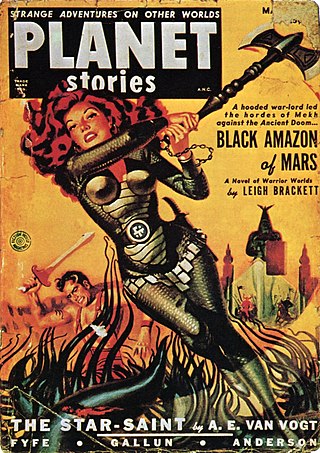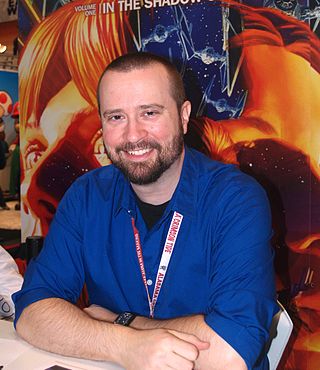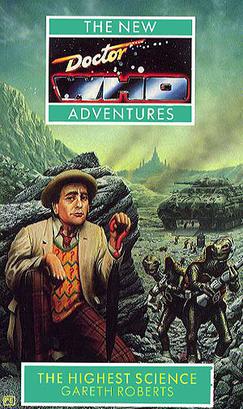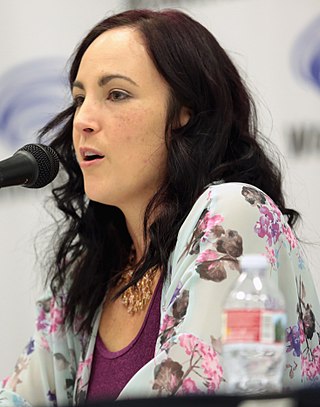
Kevin James Anderson is an American science fiction author. He has written spin-off novels for Star Wars, StarCraft, Titan A.E. and The X-Files, and with Brian Herbert is the co-author of the Dune prequel series. His original works include the Saga of Seven Suns series and the Nebula Award–nominated Assemblers of Infinity. He has also written several comic books, including the Dark Horse Star Wars series Tales of the Jedi written in collaboration with Tom Veitch, Dark Horse Predator titles, and The X-Files titles for Topps. Some of Anderson's superhero novels include Enemies & Allies, about the first meeting of Batman and Superman, and The Last Days of Krypton, telling the story of how Superman's planet Krypton came to be destroyed.

Flash Gordon is the protagonist of a space adventure comic strip created and originally drawn by Alex Raymond. First published January 7, 1934, the strip was inspired by, and created to compete with, the already established Buck Rogers adventure strip.

The Virgin New Adventures are a series of novels from Virgin Publishing based on the British science-fiction television series Doctor Who. They continued the story of the Doctor from the point at which the television programme went into hiatus from television in 1989.

A Princess of Mars is a science fantasy novel by American writer Edgar Rice Burroughs, the first of his Barsoom series. It was first serialized in the pulp magazine All-Story Magazine from February–July, 1912. Full of swordplay and daring feats, the novel is considered a classic example of 20th-century pulp fiction. It is also a seminal instance of the planetary romance, a subgenre of science fantasy that became highly popular in the decades following its publication. Its early chapters also contain elements of the Western. The story is set on Mars, imagined as a dying planet with a harsh desert environment. This vision of Mars was based on the work of the astronomer Percival Lowell, whose ideas were widely popularized in the late 19th and early 20th centuries.

Planet Stories was an American pulp science fiction magazine, published by Fiction House between 1939 and 1955. It featured interplanetary adventures, both in space and on some other planets, and was initially focused on a young readership. Malcolm Reiss was editor or editor-in-chief for all of its 71 issues. Planet Stories was launched at the same time as Planet Comics, the success of which probably helped to fund the early issues of Planet Stories. Planet Stories did not pay well enough to regularly attract the leading science fiction writers of the day, but occasionally obtained work from well-known authors, including Isaac Asimov and Clifford D. Simak. In 1952 Planet Stories published Philip K. Dick's first sale, and printed four more of his stories over the next three years.
Judy Blundell, pseudonym Jude Watson, is an American author of books for middle grade, young adult, and adult readers. She won the annual National Book Award for Young People's Literature in 2008 for the young adult novel What I Saw and How I Lied, published under her real name by Scholastic Books.
The Golden Duck Awards for Excellence in Children's Science Fiction were given annually from 1992 to 2017. The awards were presented every year at either Worldcon or the North American Science Fiction Convention (NASFiC). In 2018 they were replaced by Notable Book Lists of the same names sponsored by the Library and Information Technology Association (LITA).
The True Game is the collective name for a series of three related trilogies of short novels by Sheri S. Tepper. The novels explore the Lands of the True Game, a portion of a planet explored by humanity somewhere in the future. These novels straddle the genres of both fantasy and science-fiction, although this does not become apparent until quite late in the overall story.
Star Trek: A Time to... is a series of nine novels set in the fictional universe of Star Trek: The Next Generation. It deals with the ship and crew of the Enterprise (NCC-1701-E) between the events of the films Star Trek: Insurrection (1998) and Star Trek Nemesis (2002). The series includes explanations for some apparent continuity problems between these films.

Subterranean fiction is a subgenre of speculative fiction, science fiction, or fantasy which focuses on fictional underground settings, sometimes at the center of the Earth or otherwise deep below the surface. The genre is based on, and has in turn influenced, the Hollow Earth theory. The earliest works in the genre were Enlightenment-era philosophical or allegorical works, in which the underground setting was often largely incidental. In the late 19th century, however, more pseudoscientific or proto-science-fictional motifs gained prevalence. Common themes have included a depiction of the underground world as more primitive than the surface, either culturally, technologically or biologically, or in some combination thereof. The former cases usually see the setting used as a venue for sword-and-sorcery fiction, while the latter often features cryptids or creatures extinct on the surface, such as dinosaurs or archaic humans. A less frequent theme has the underground world much more technologically advanced than the surface one, typically either as the refugium of a lost civilization, or as a secret base for space aliens.

Neil Ronald Jones was an American writer who worked for the state of New York. His first story, "The Death's Head Meteor", was published in Air Wonder Stories in 1930, possibly recording the first use of "astronaut" in fiction. He also pioneered cyborg and robotic characters, and is credited with inspiring the modern idea of cryonics. Most of his stories fit into a "future history" like that of Robert A. Heinlein or Cordwainer Smith, well before either of them used this convention in their fiction.

Dan Jolley is an American novelist and comic book writer. His comics work includes DC Comics' Firestorm and Graphic Universe's Twisted Journeys, a series of interactive fiction or gamebooks in graphic novel form, and his novel work includes the young-adult science fiction espionage series Alex Unlimited along with his international best selling novel, The Gray Widow's Walk, which is his first book in the Gray Widow trilogy that he publishes through Seventh Star Press. He created the comic book character Jason Rusch with ChrisCross.

The Highest Science is an original novel written by Gareth Roberts and based on the long-running British science fiction television series Doctor Who. It features the Seventh Doctor and Bernice and the first appearance of the recurring monsters, the Chelonians. A prelude to the novel, also penned by Roberts, appeared in Doctor Who Magazine #196.

The Queen of Zamba is a science fiction novel by American writer L. Sprague de Camp, the first book of his Viagens Interplanetarias series and its subseries of stories set on the fictional planet Krishna. It was written between November 1948 and January 1949 and first published in the magazine Astounding Science Fiction as a two-part serial in the issues for August and September 1949. It was first published in book form as a paperback by Ace Books in 1954 as an "Ace Double" issued back-to-back with Clifford D. Simak's novel Ring Around the Sun. This version was editorially retitled Cosmic Manhunt and introduced a number of textual changes disapproved by the author. The novel was first issued by itself in another paperback edition under the title A Planet Called Krishna, published in England by Compact Books in 1966. A new paperback edition restoring the author's preferred title and text and including the Krishna short story "Perpetual Motion" was published by Dale Books in 1977. This edition was reprinted by Ace Books in 1982 as part of the standard edition of the Krishna novels. The novel has been translated into German, French, Italian, Czech, and Polish. An E-book edition was published by Gollancz's SF Gateway imprint on September 29, 2011 as part of a general release of de Camp's works in electronic form.

Ports of Call is a 1998 science fiction adventure novel by American writer Jack Vance. Followed by the novel Lurulu, it tells the story of a young man named Myron Tany on a picaresque journey through the Gaean Reach.

Two Complete Science-Adventure Books was an American pulp science fiction magazine, published by Fiction House, which lasted for eleven issues between 1950 and 1954 as a companion to Planet Stories. Each issue carried two novels or long novellas. It was initially intended to carry only reprints, but soon began to publish original stories. Contributors included Isaac Asimov, Robert A. Heinlein, Arthur C. Clarke, Poul Anderson, John Brunner, and James Blish. The magazine folded in 1954, almost at the end of the pulp era.
"Journey to Star Wars" is a Disney/Lucasfilm publishing initiative that connects the Star Wars sequel films with previous film installments in the franchise. It currently includes the initiatives "Journey to Star Wars: The Force Awakens", and "Journey to Star Wars: The Last Jedi", and "Journey to Star Wars: The Rise of Skywalker". All titles under the program are canonical to the Star Wars universe.

Delilah S. Dawson is an American author, primarily of fantasy and science fiction. Some of her fantasy has been written under the name Lila Bowen. She has also written erotica as Ava Lovelace.
Star Wars: The High Republic is a multimedia project consisting of various stories from the Star Wars franchise set during the "High Republic" era, which spans approx. 500 to 100 years before the Skywalker Saga and is set hundreds of years after the fall of the "Old Republic". The initiating event of the sub-franchise is "The Great Disaster" involving the antagonistic "space Vikings" known as the Nihil and the subsequent intervention of the Jedi.












